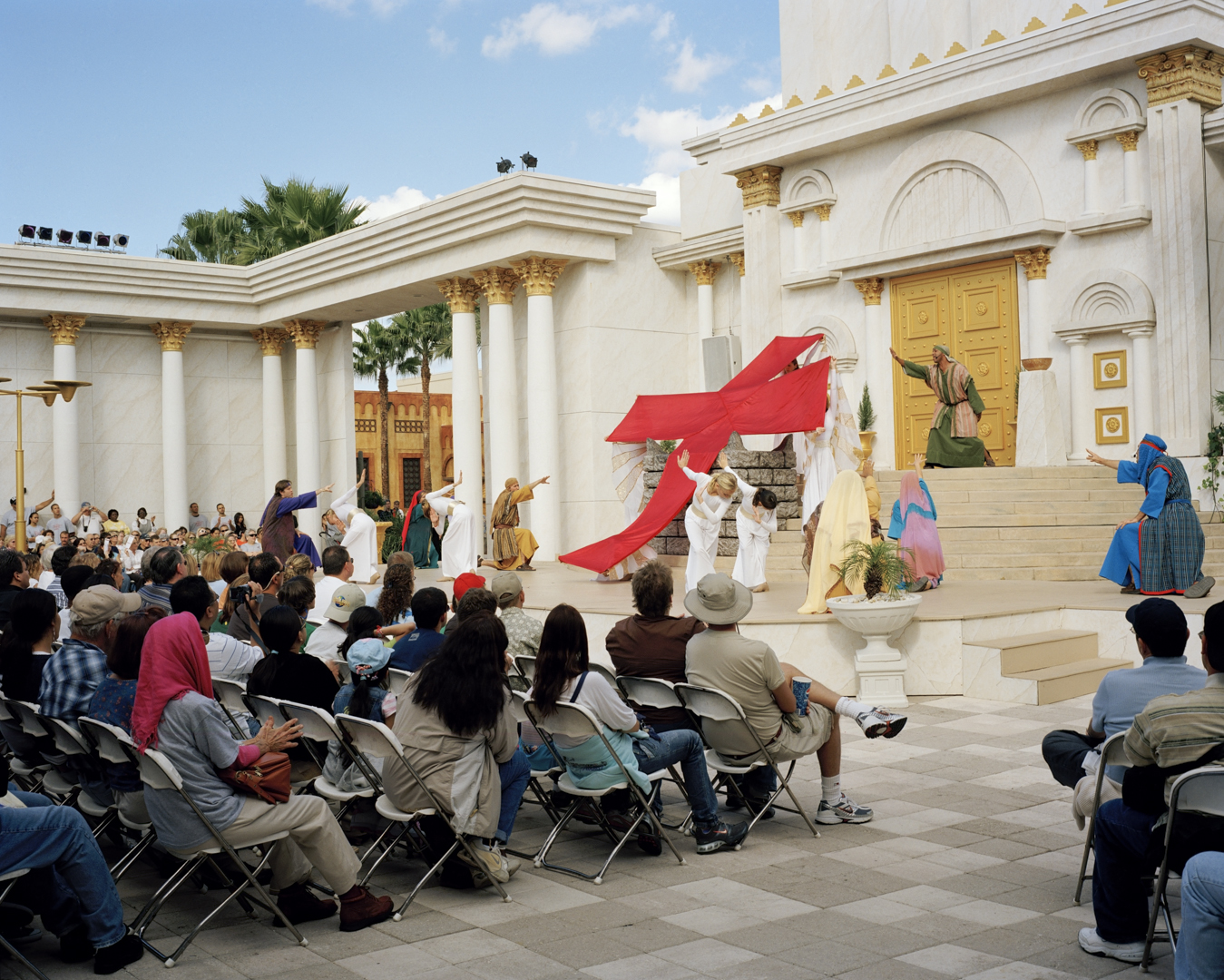
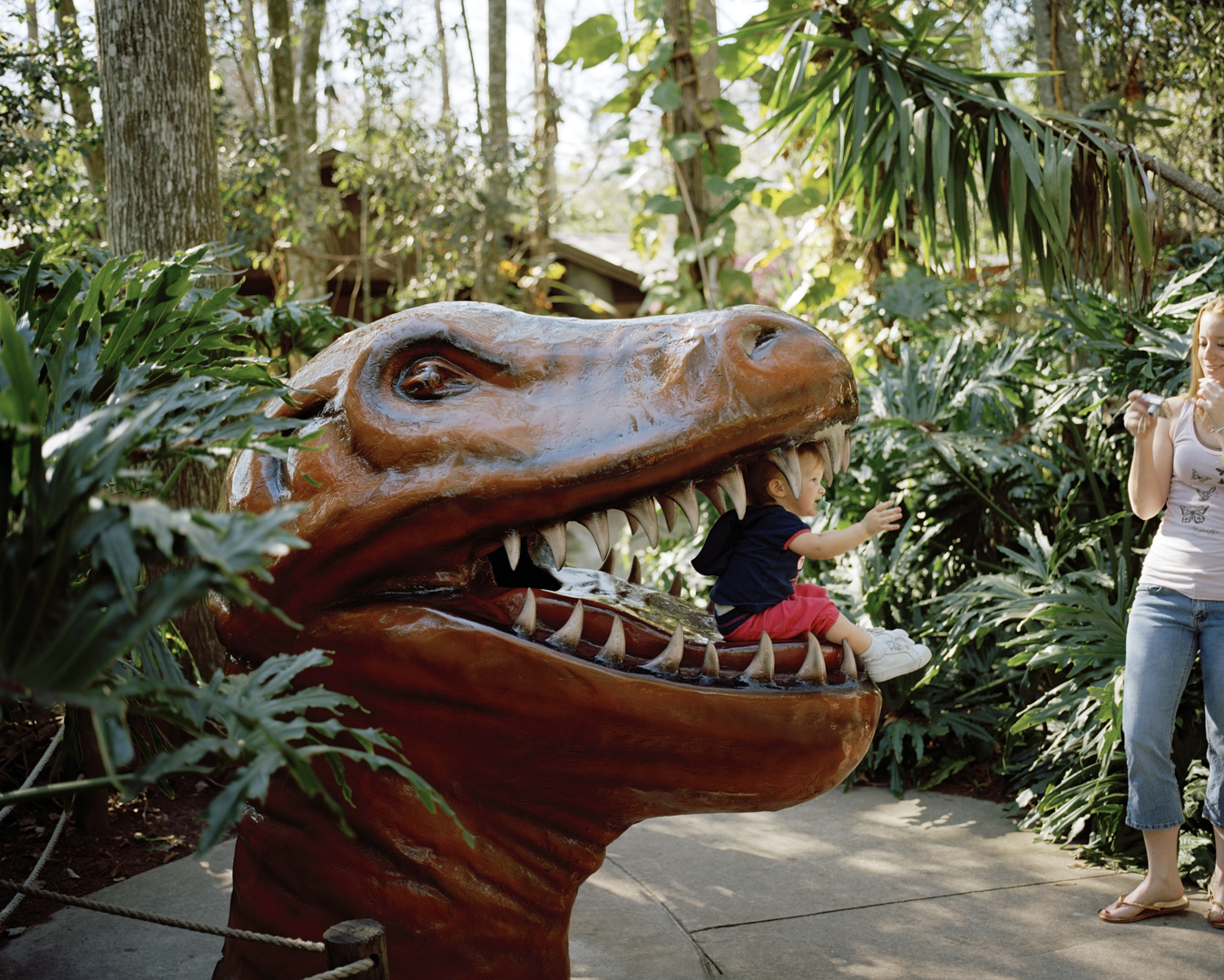
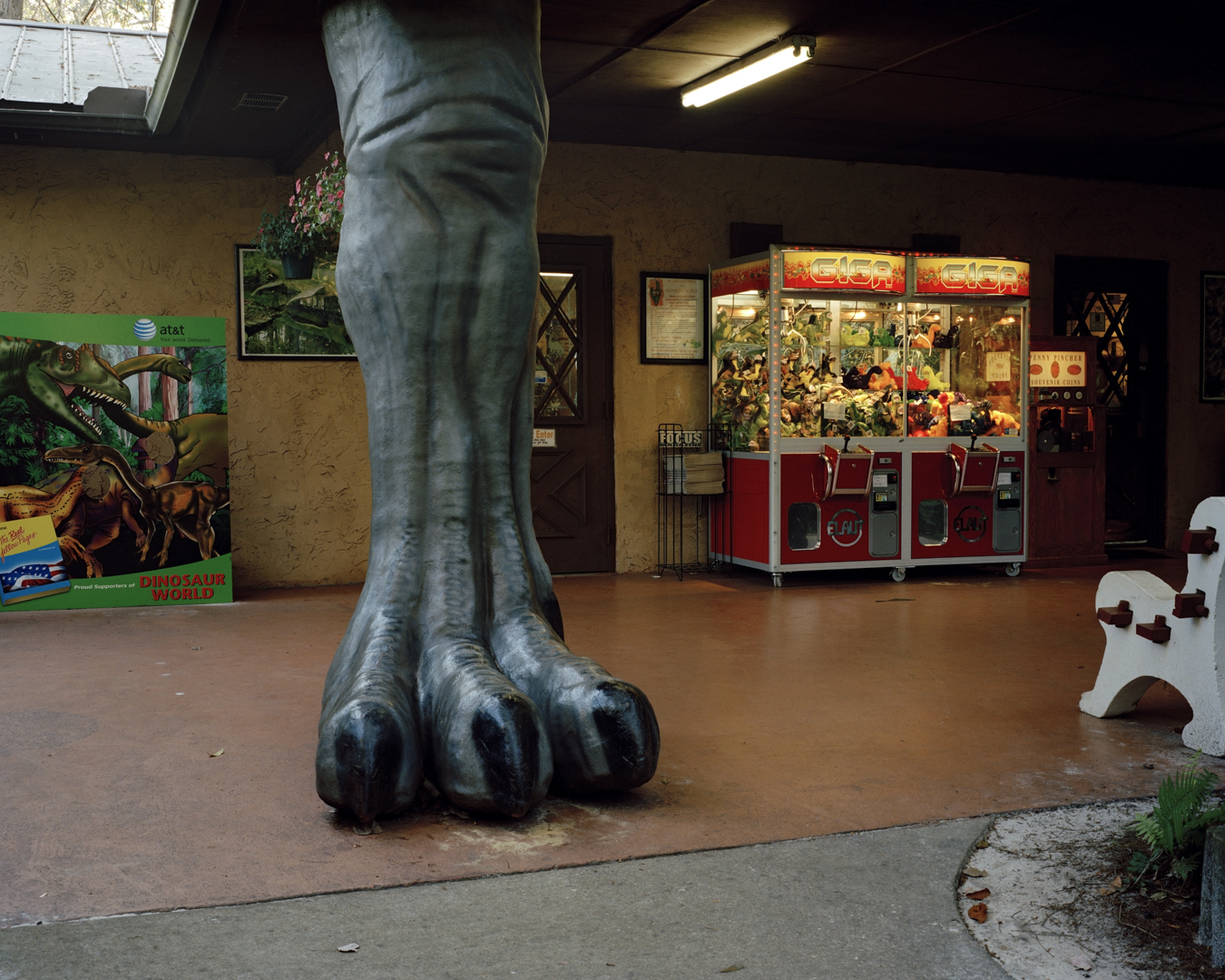
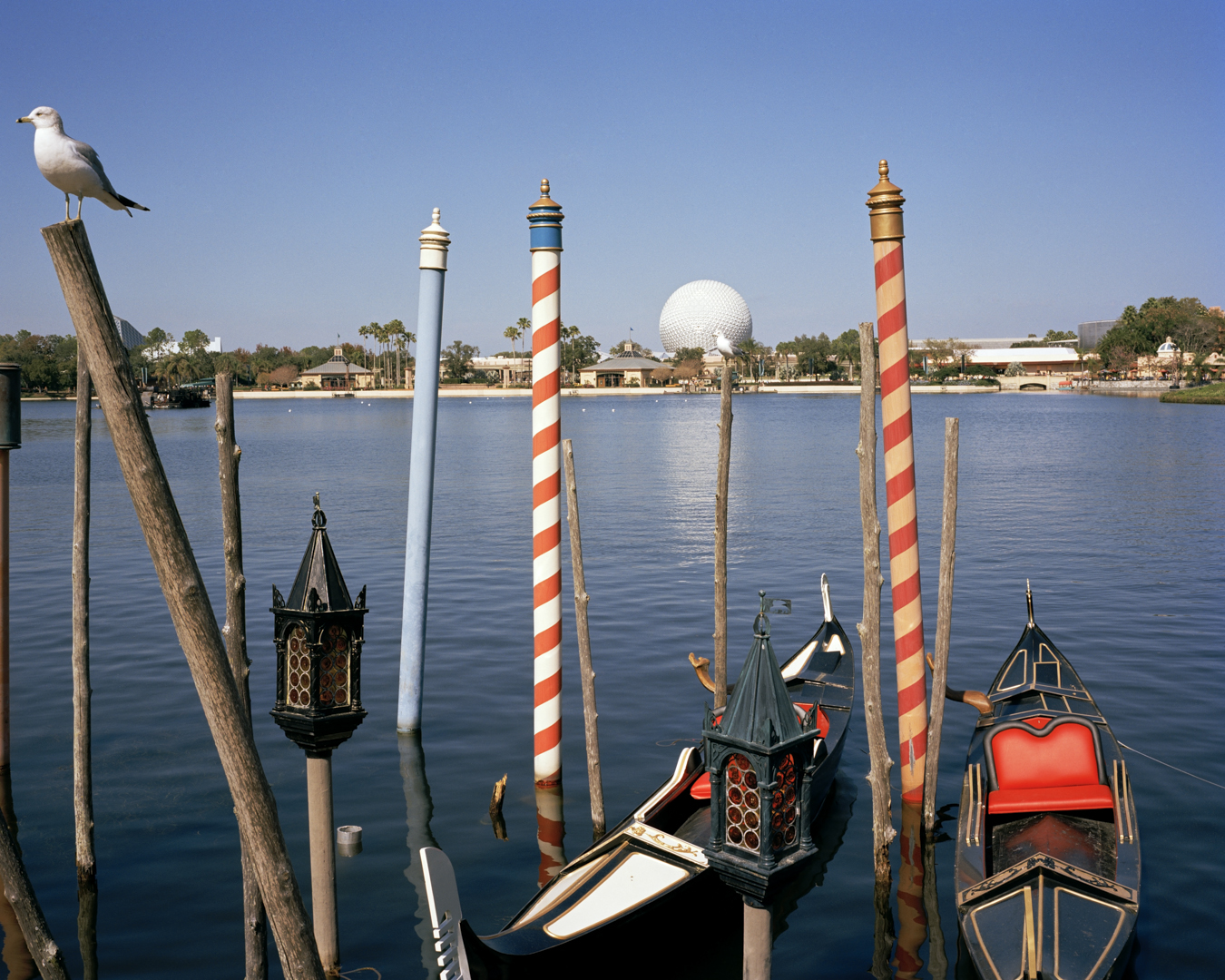
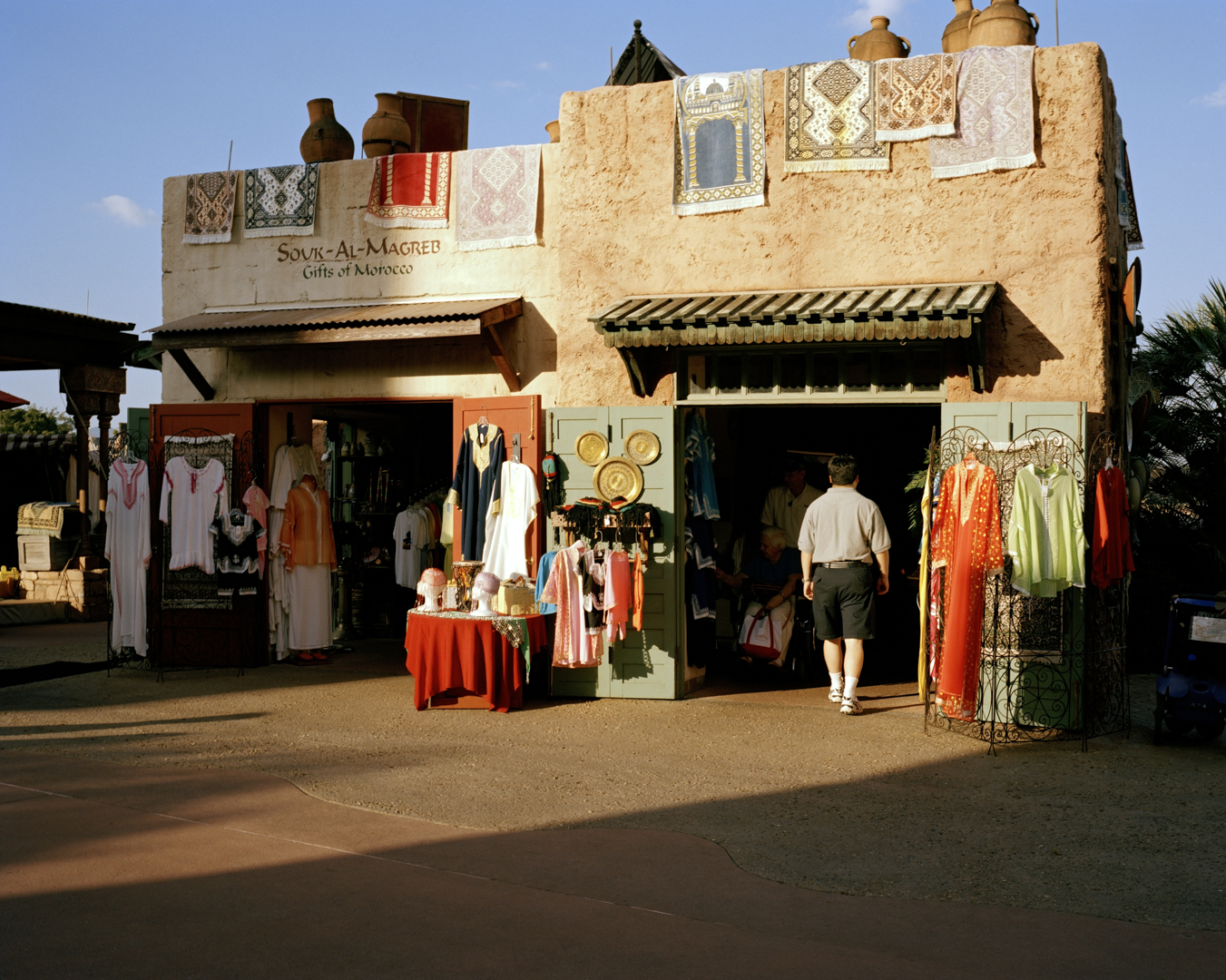
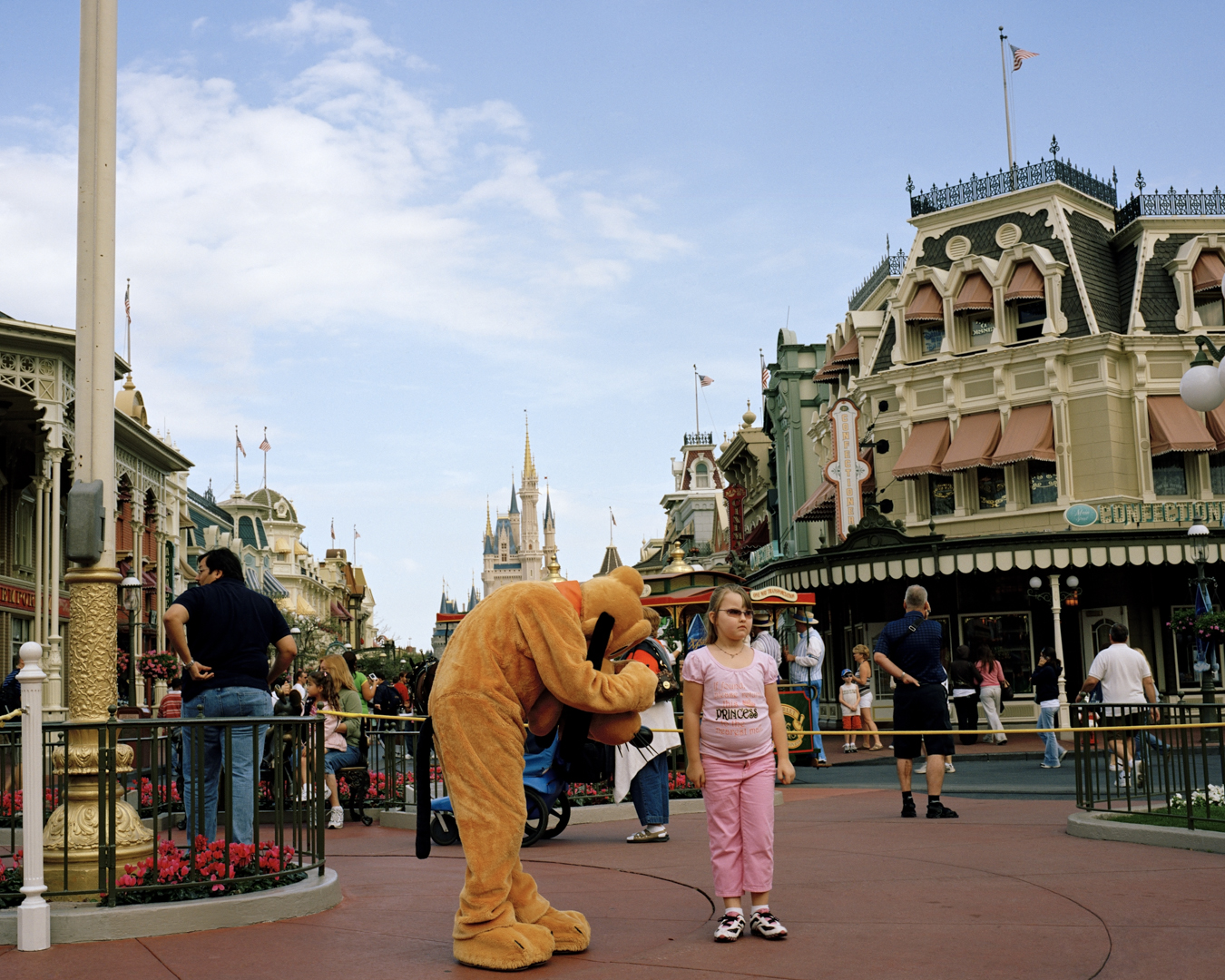
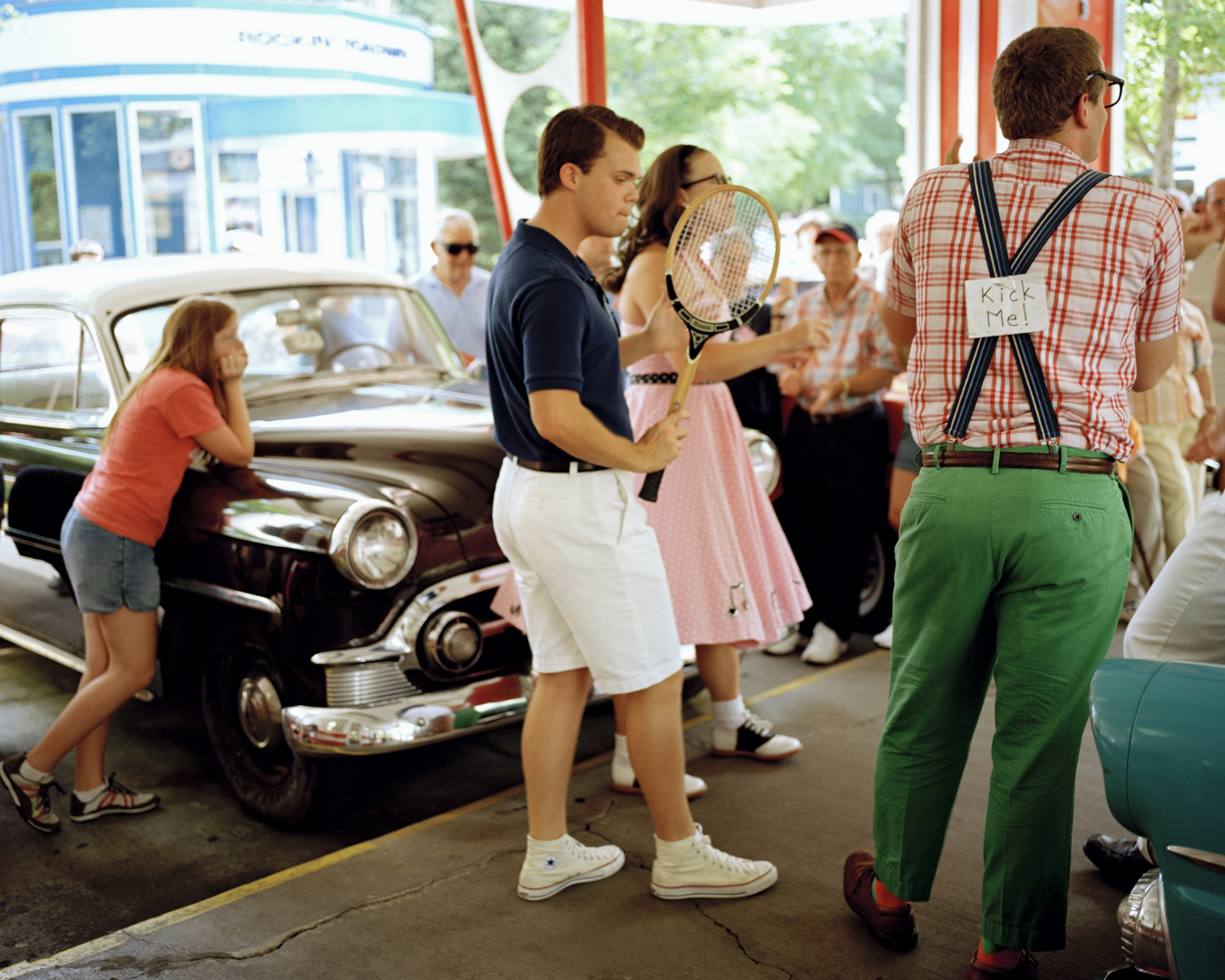
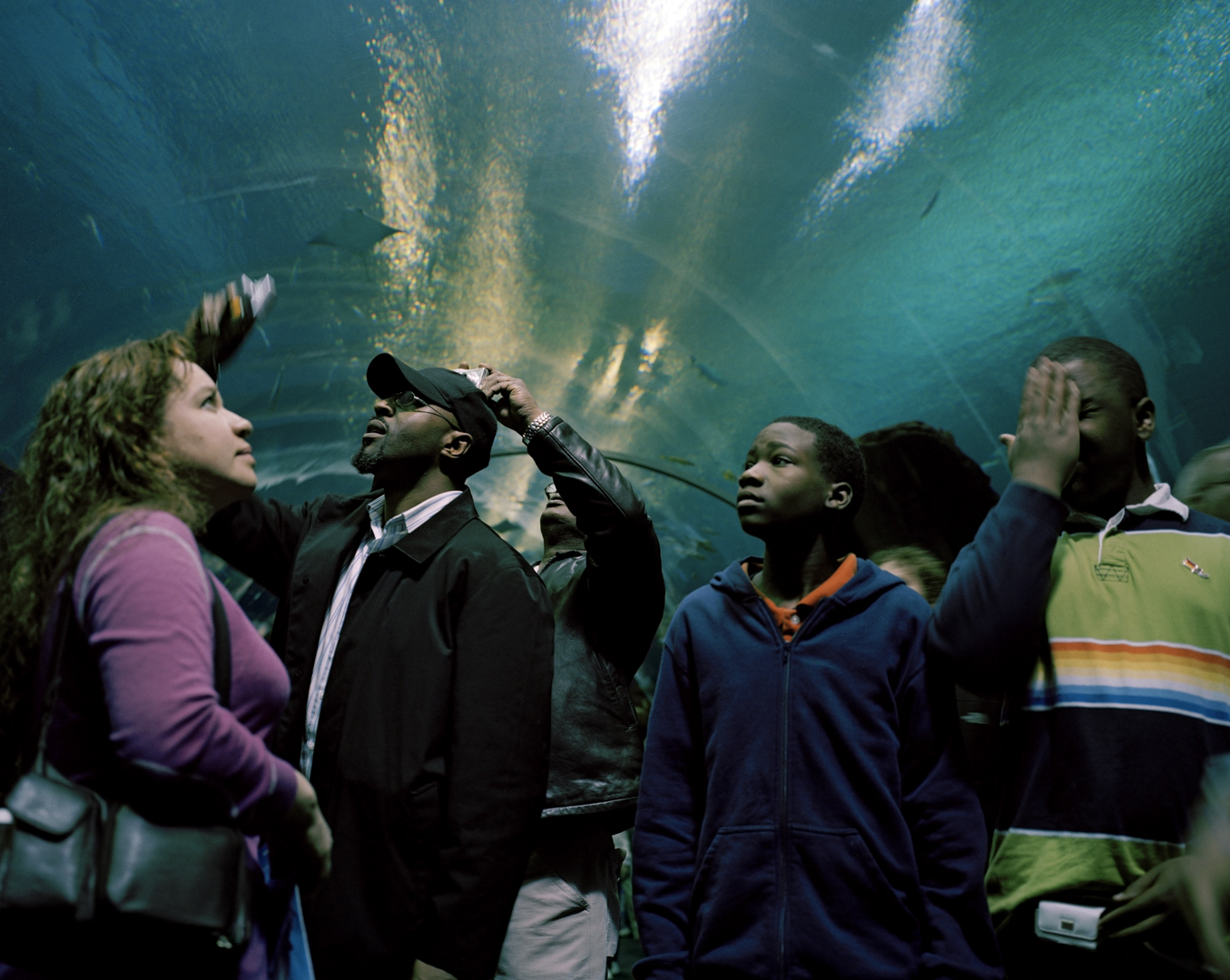
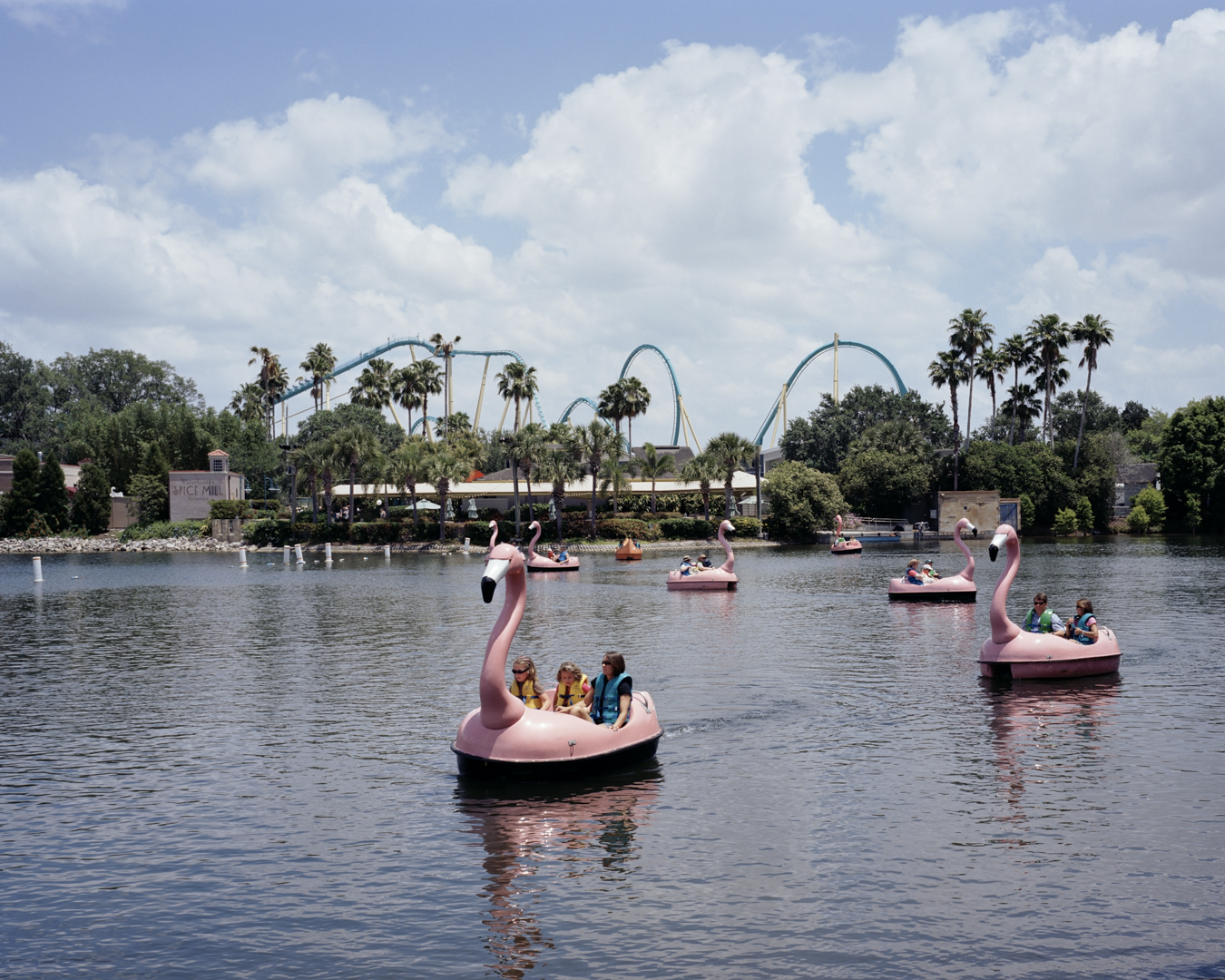
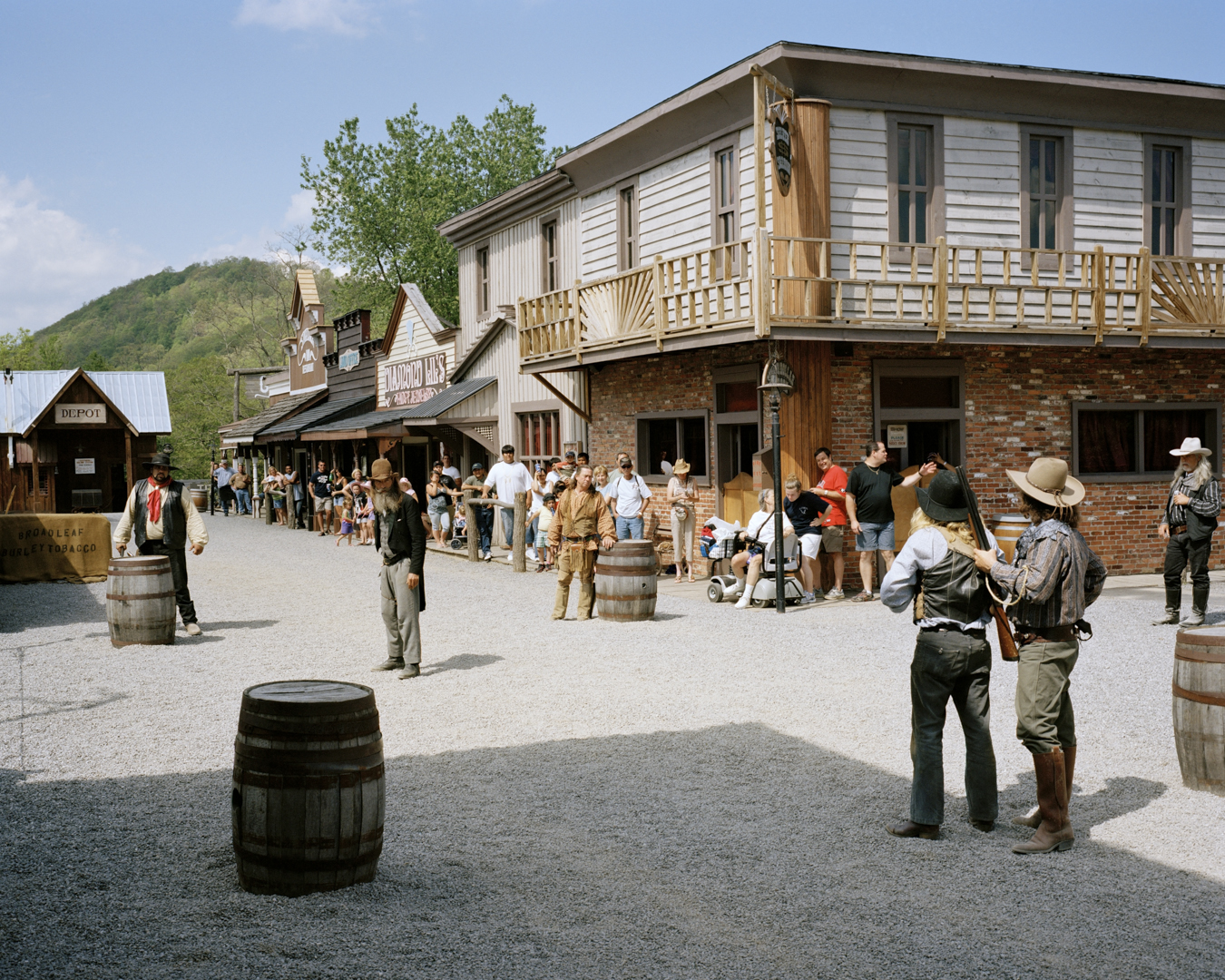
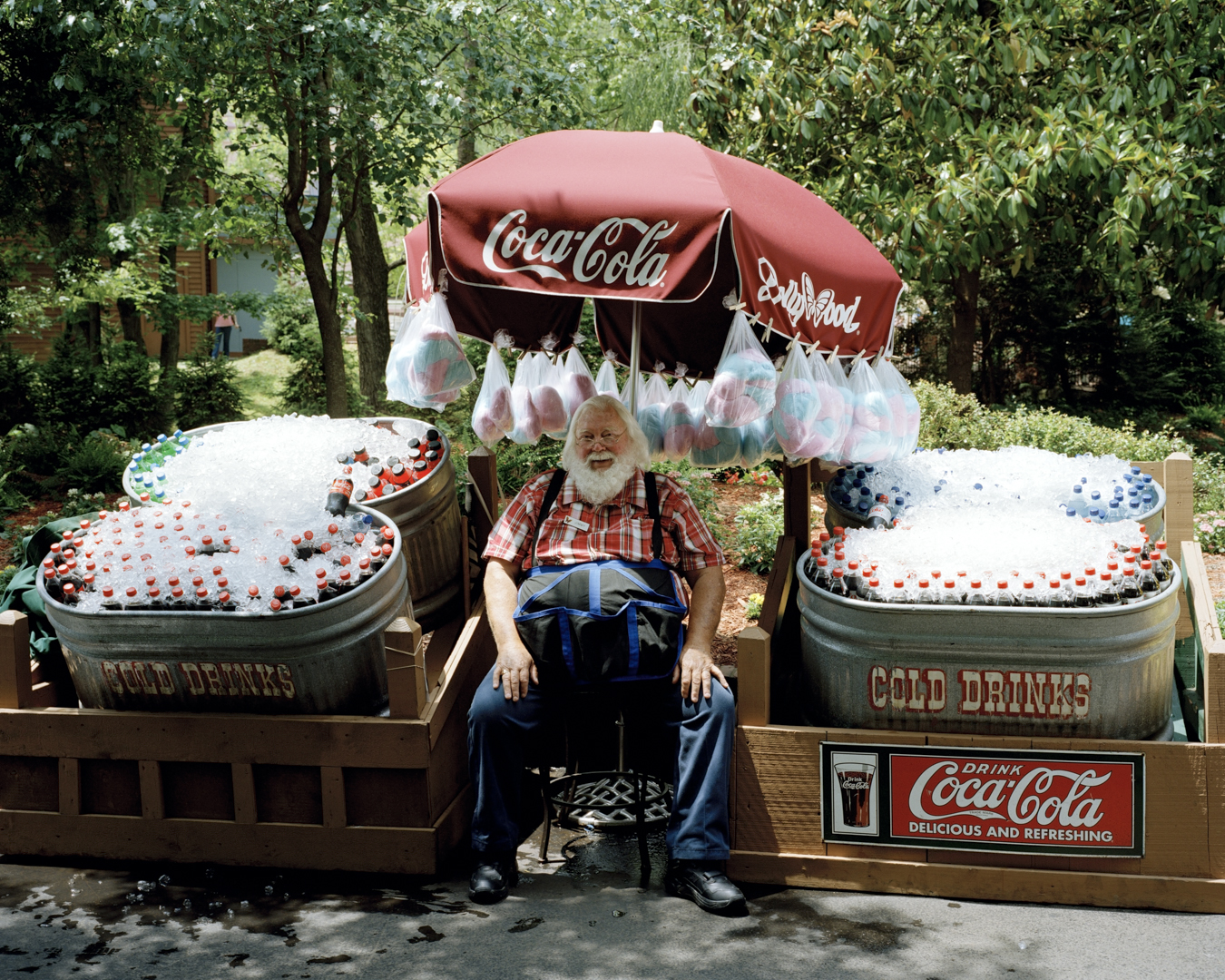
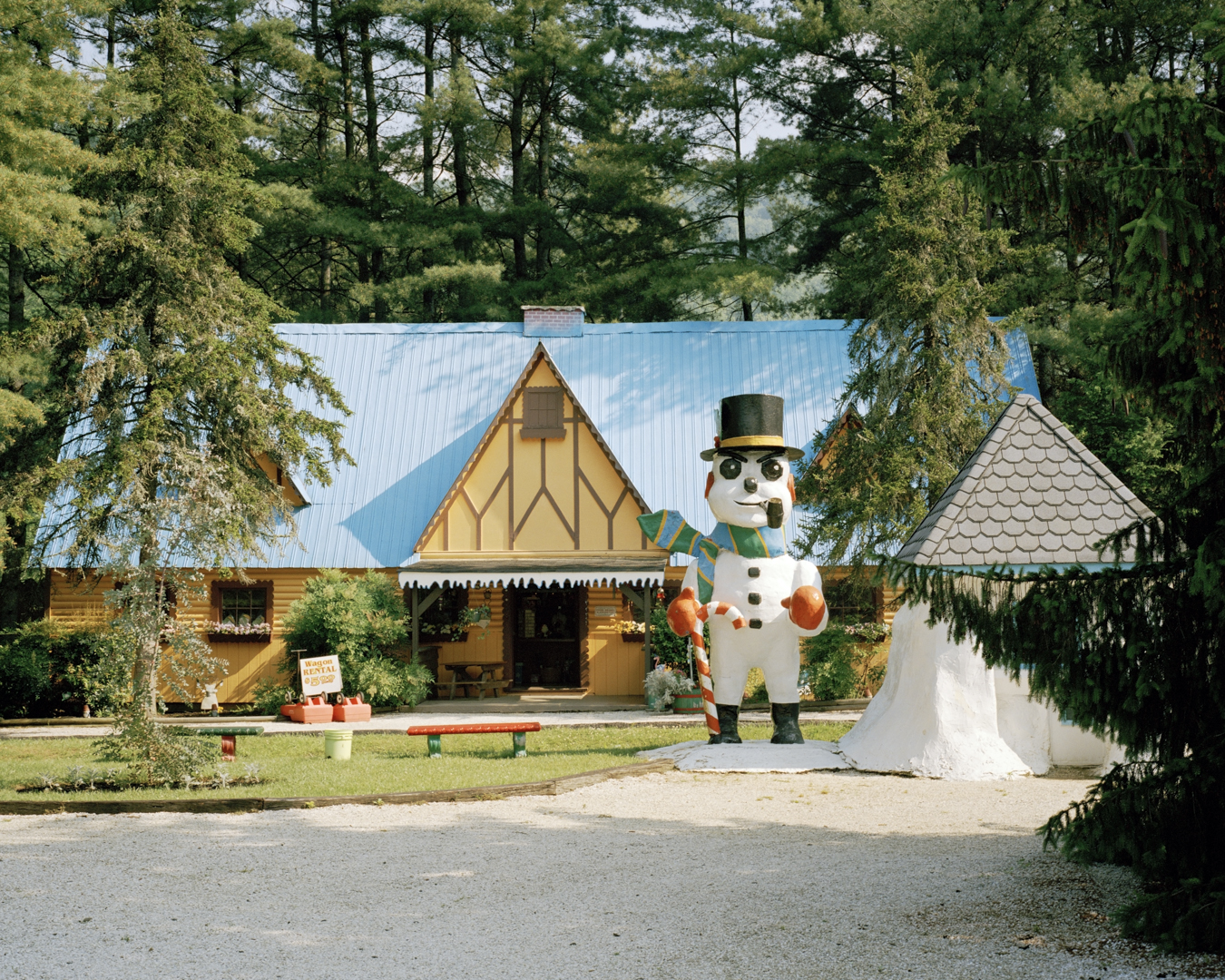
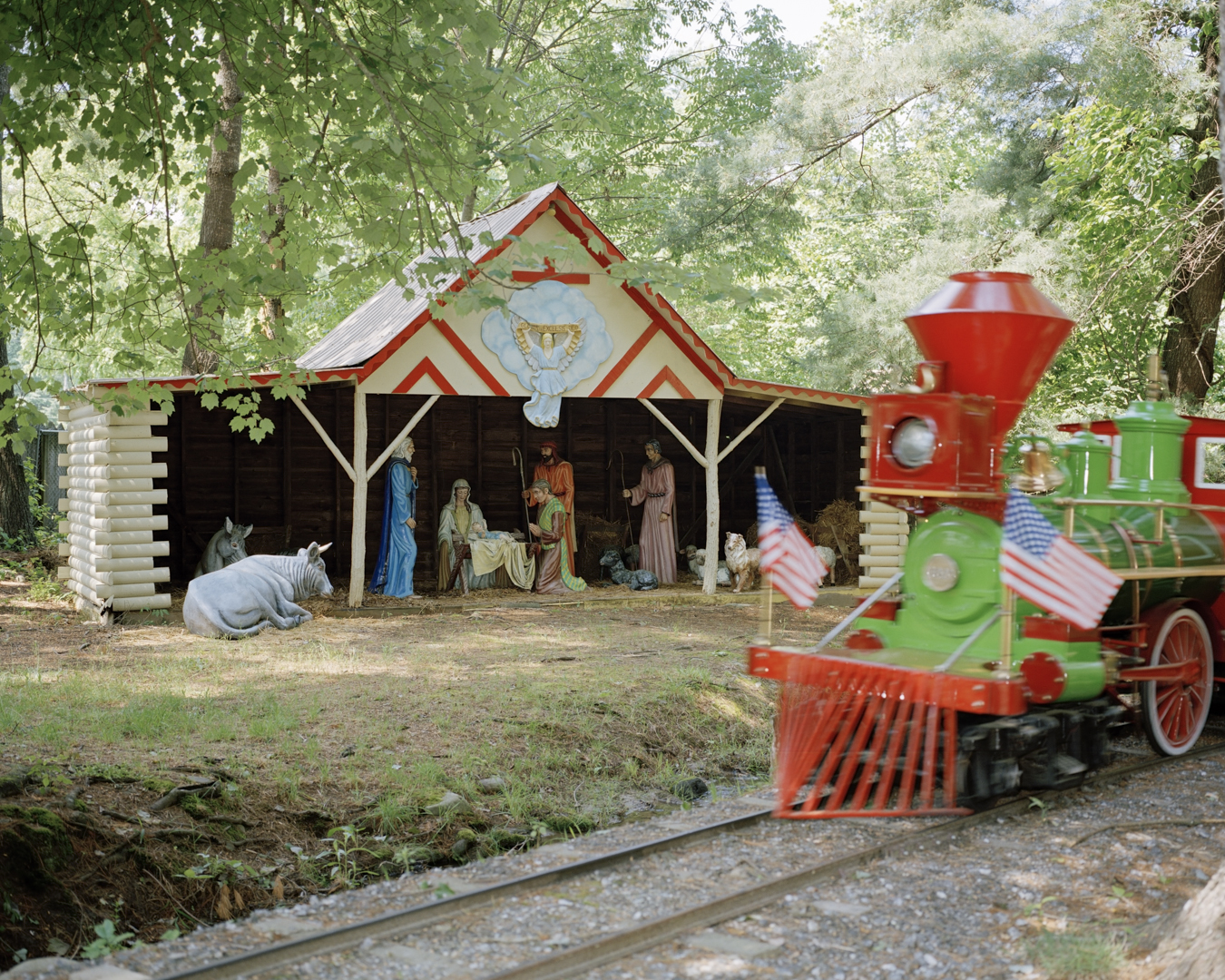
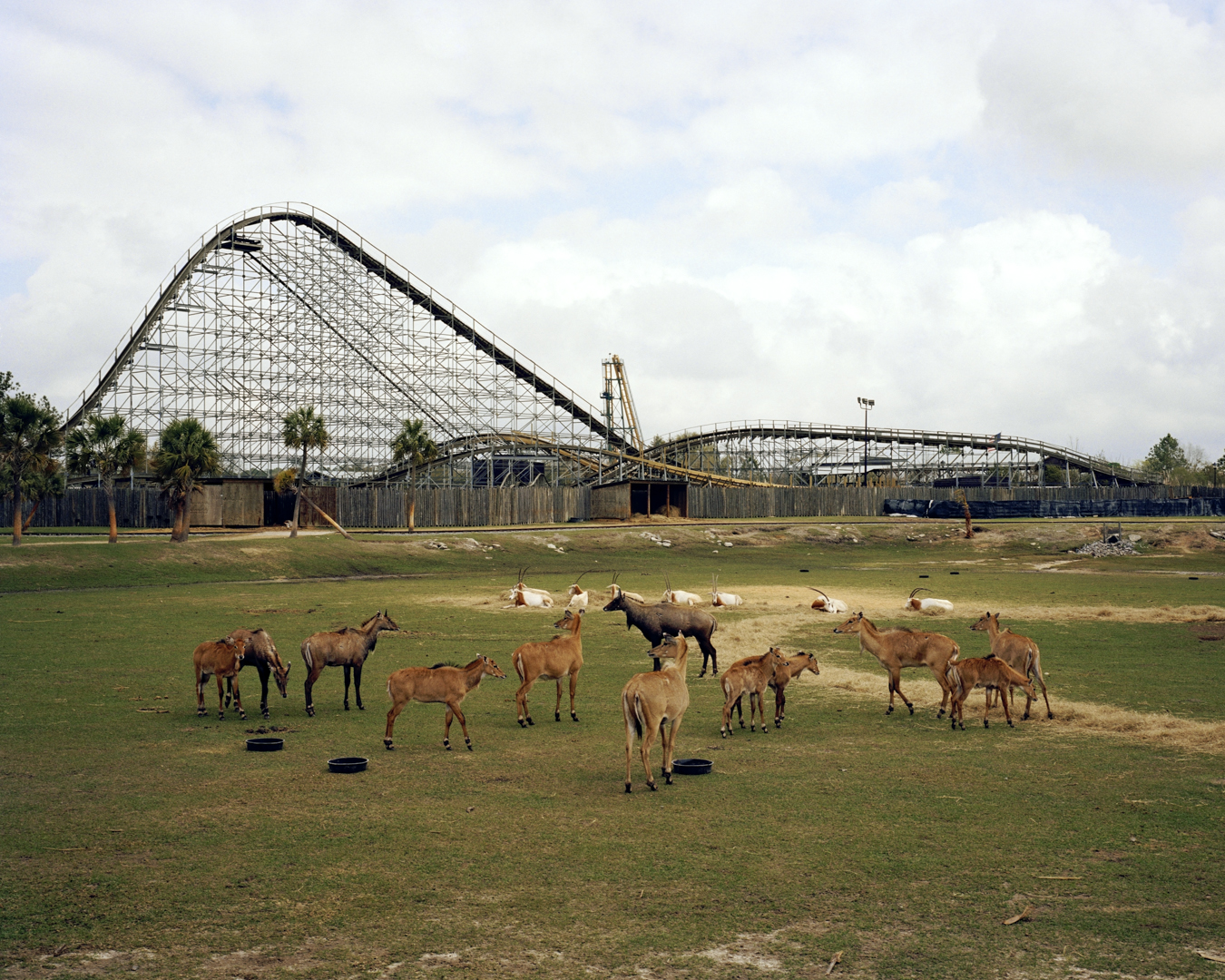

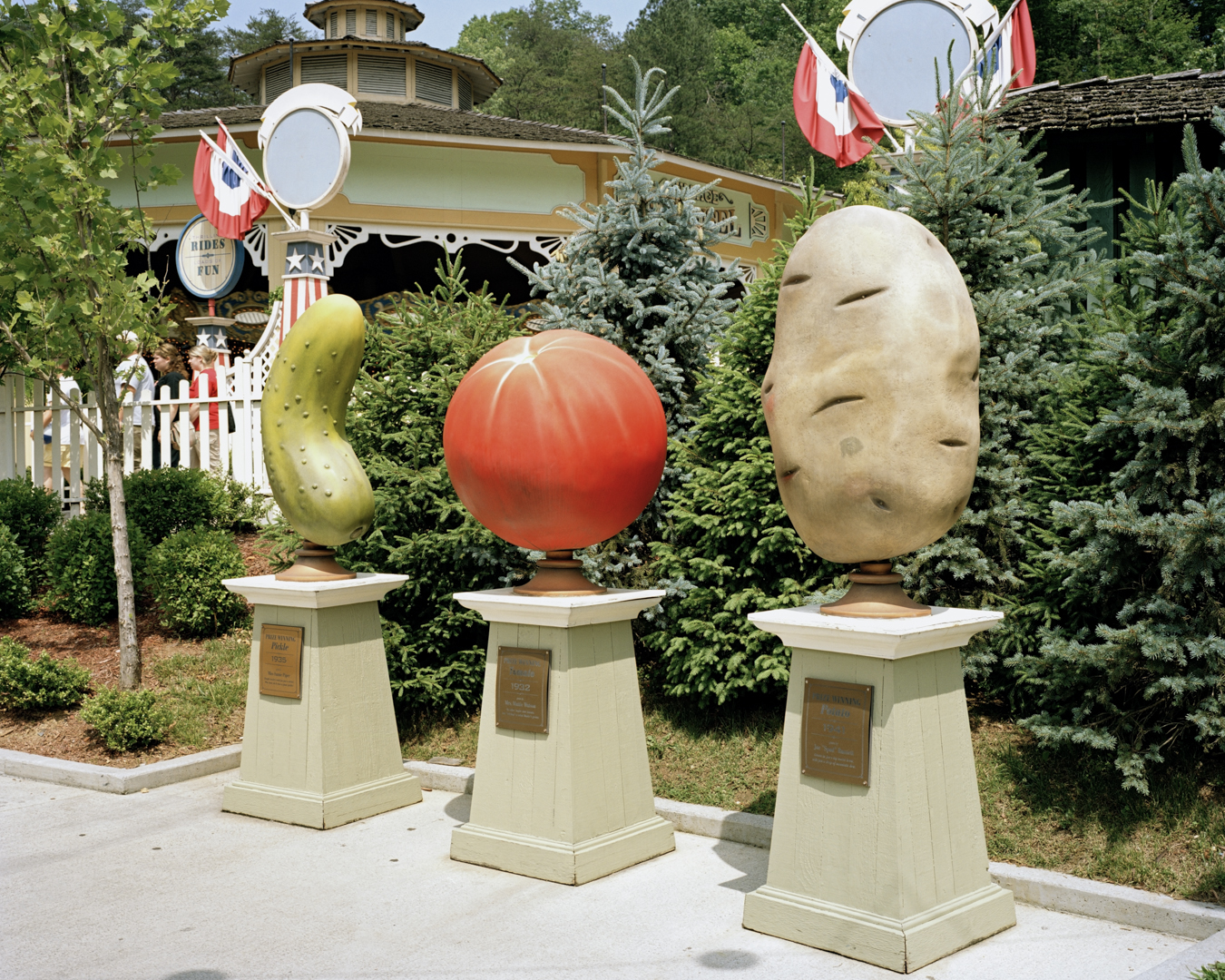
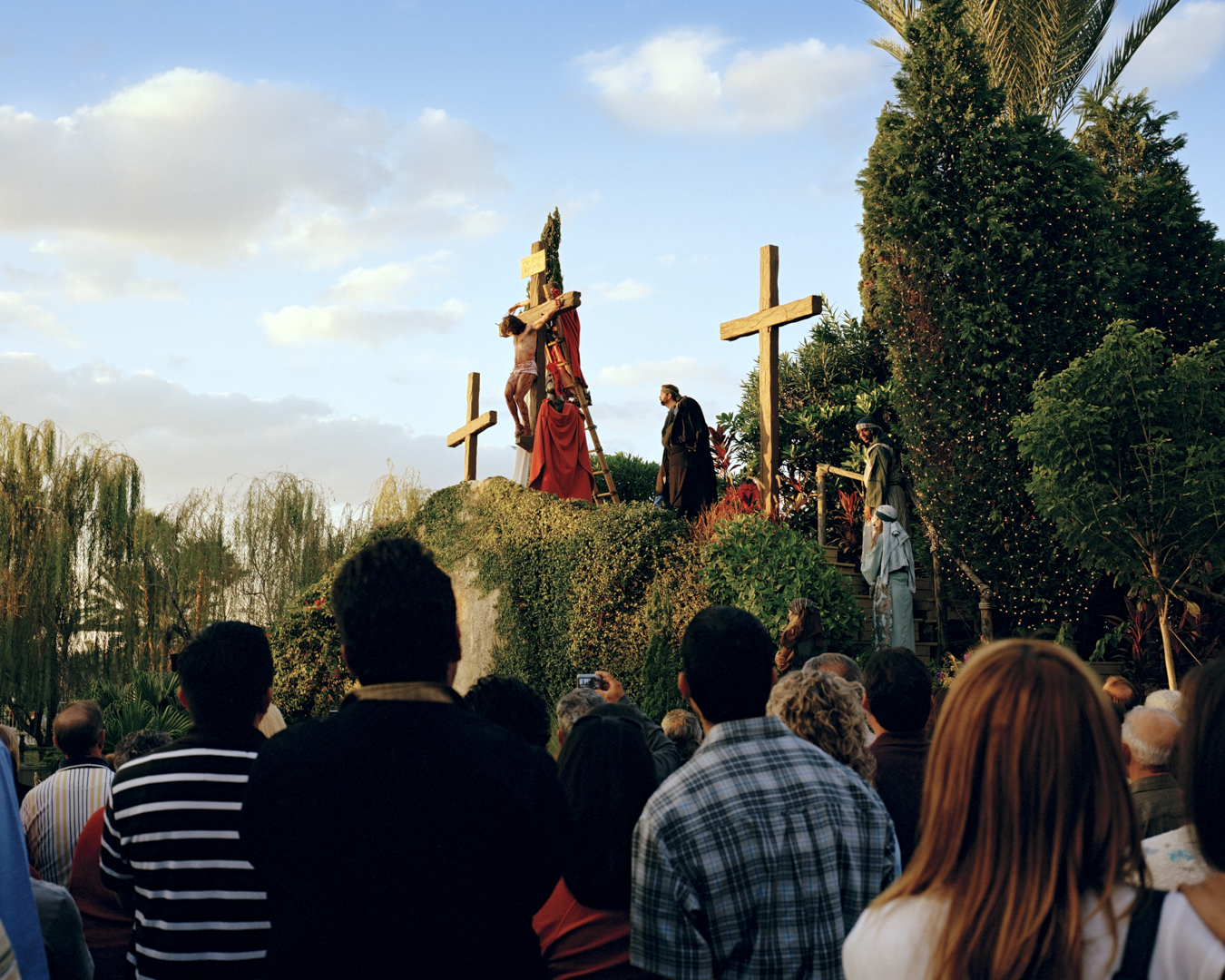
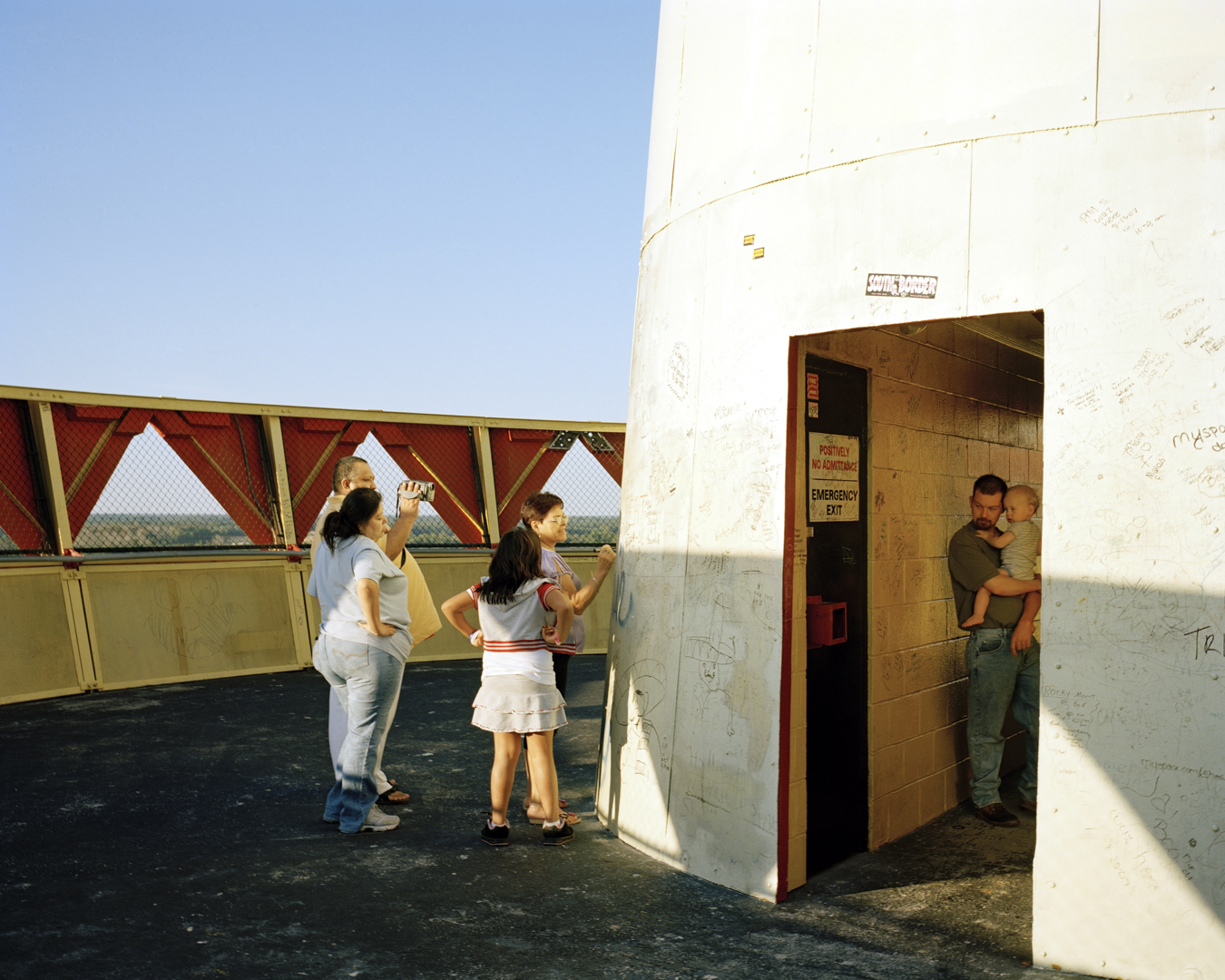
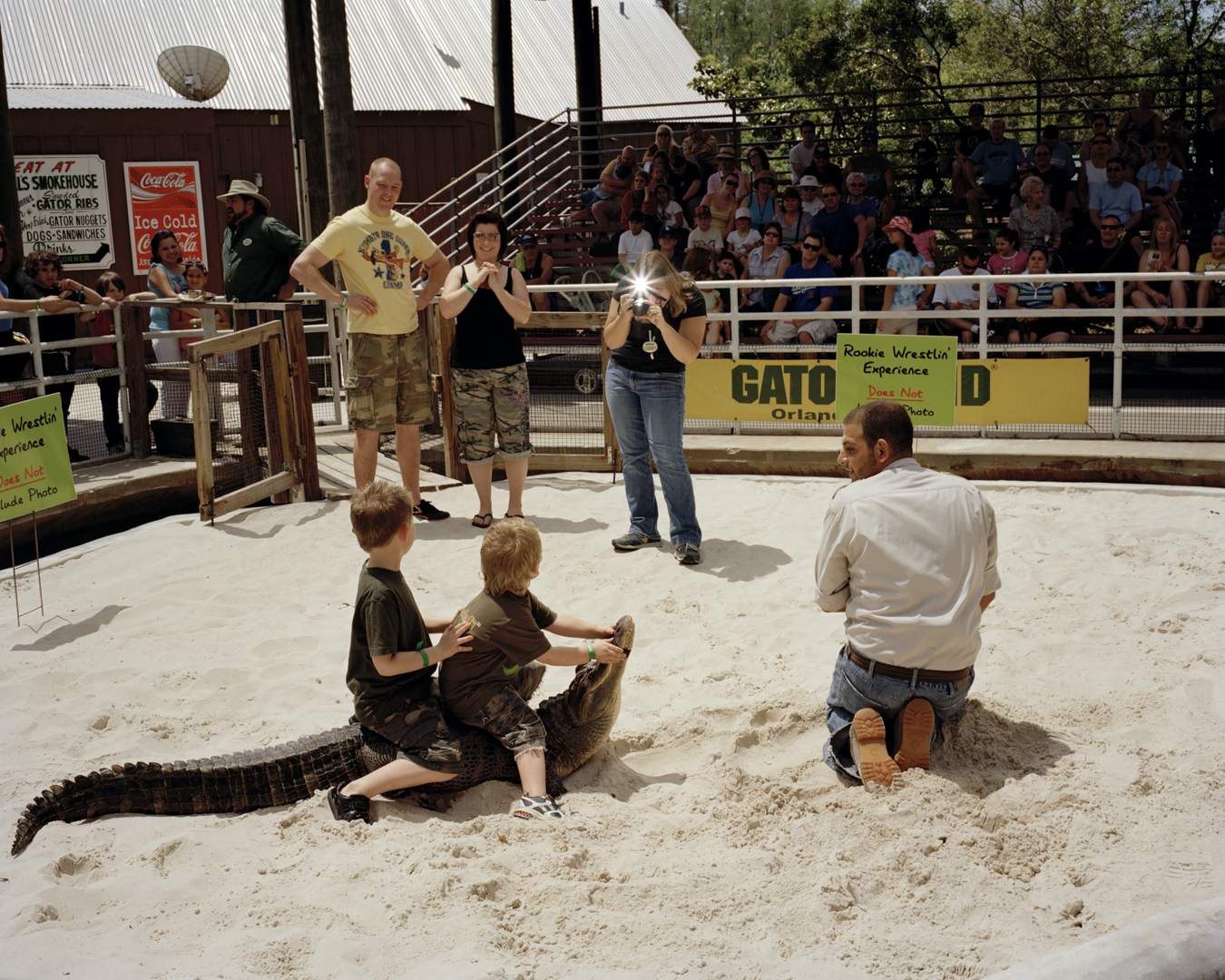
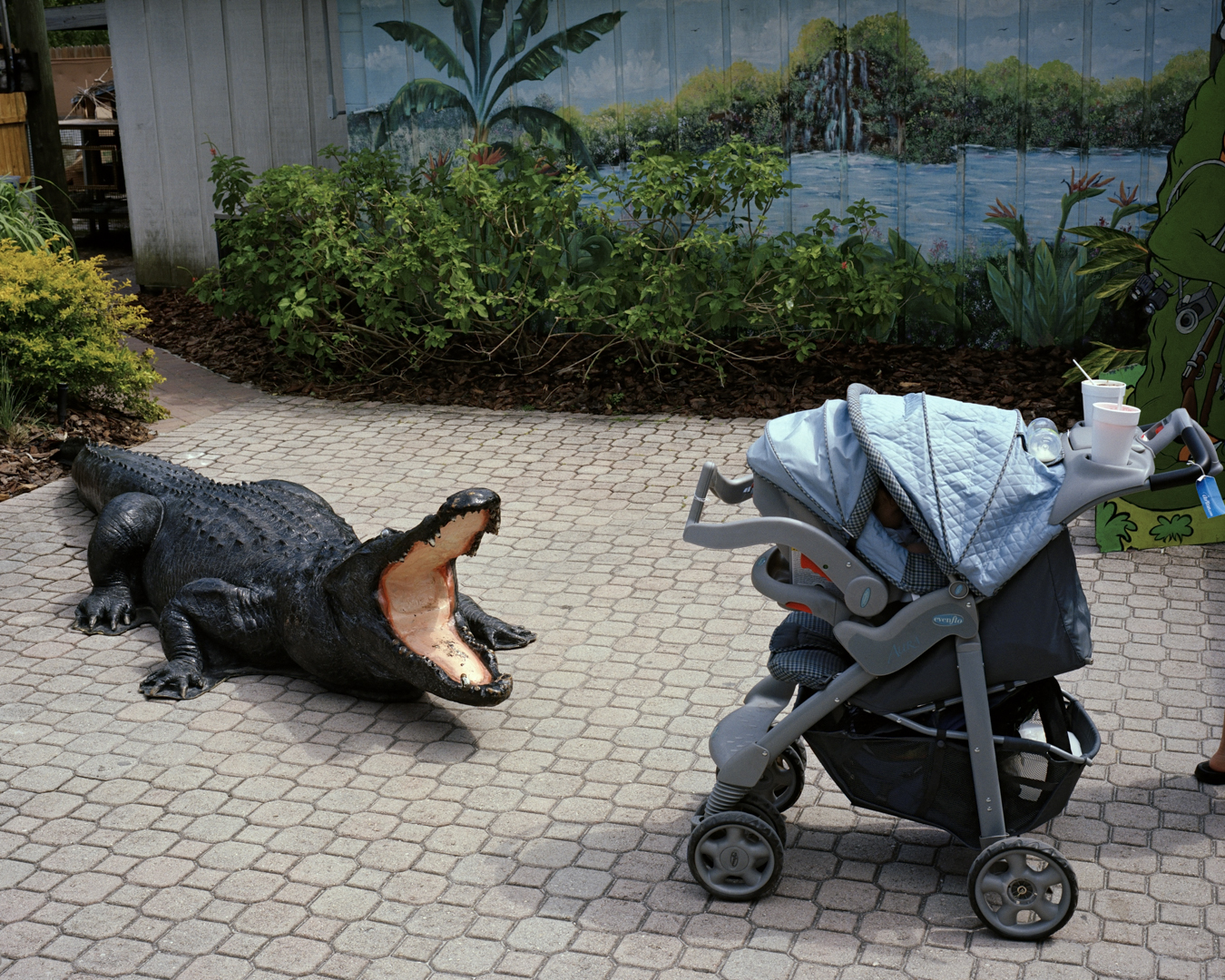
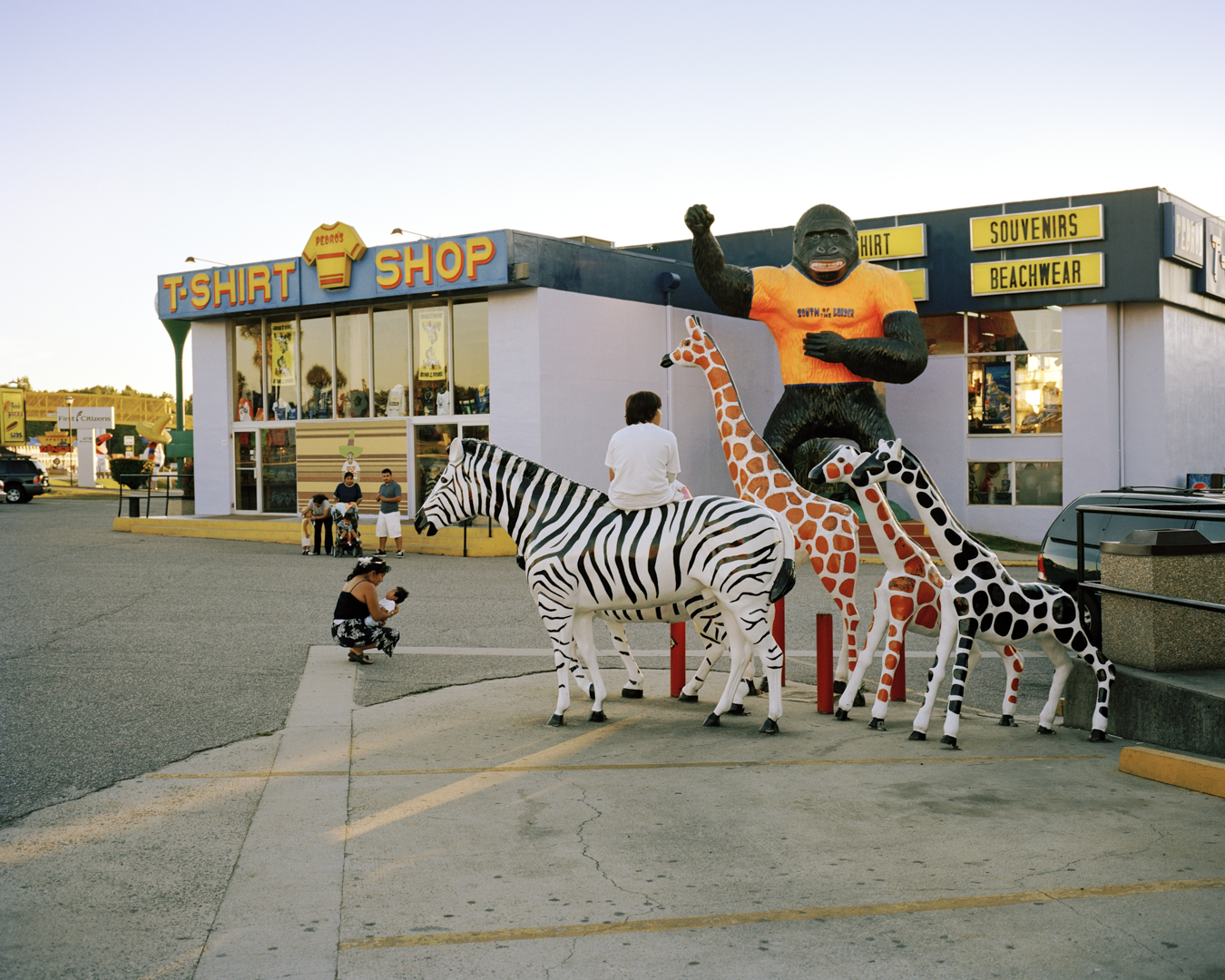
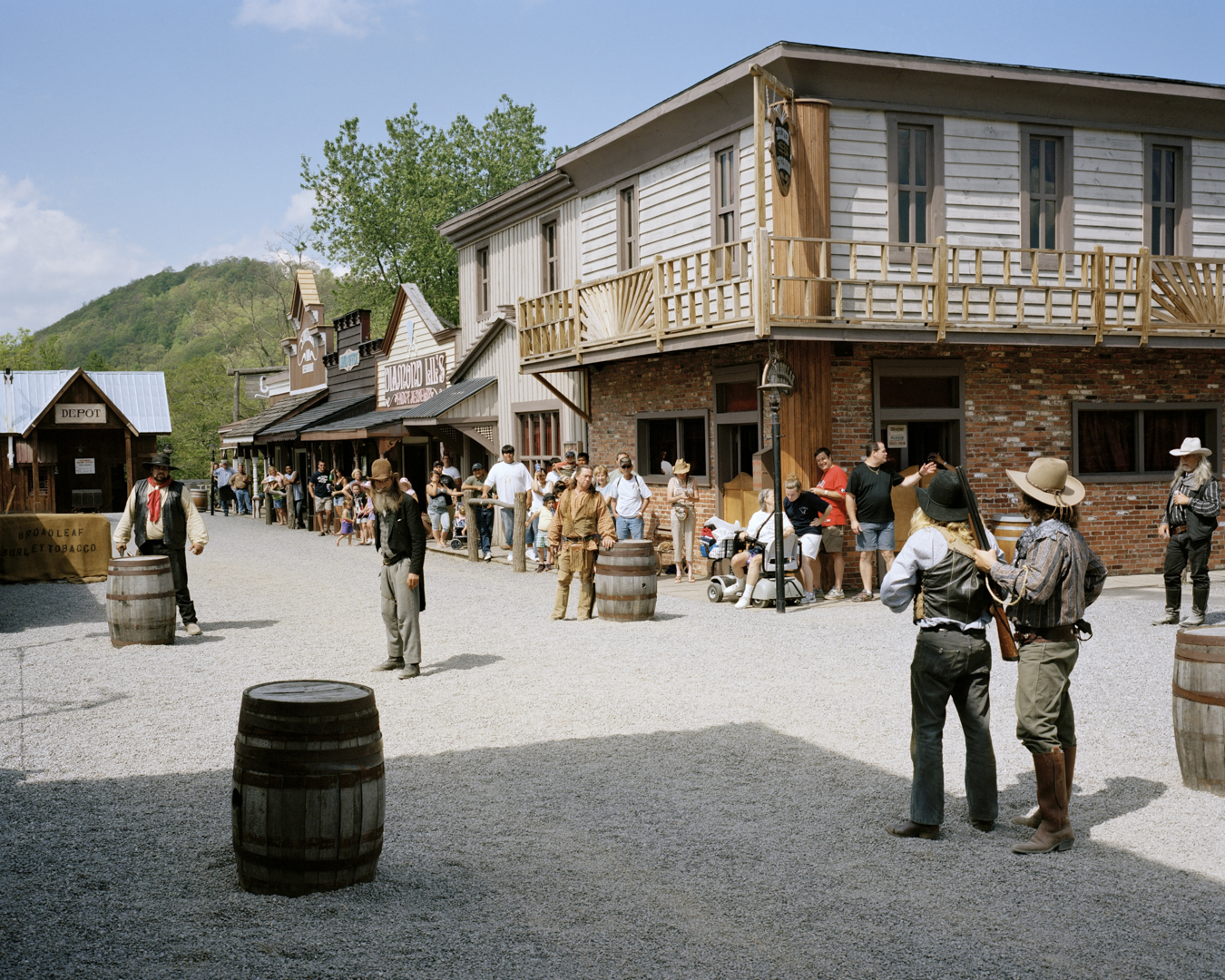
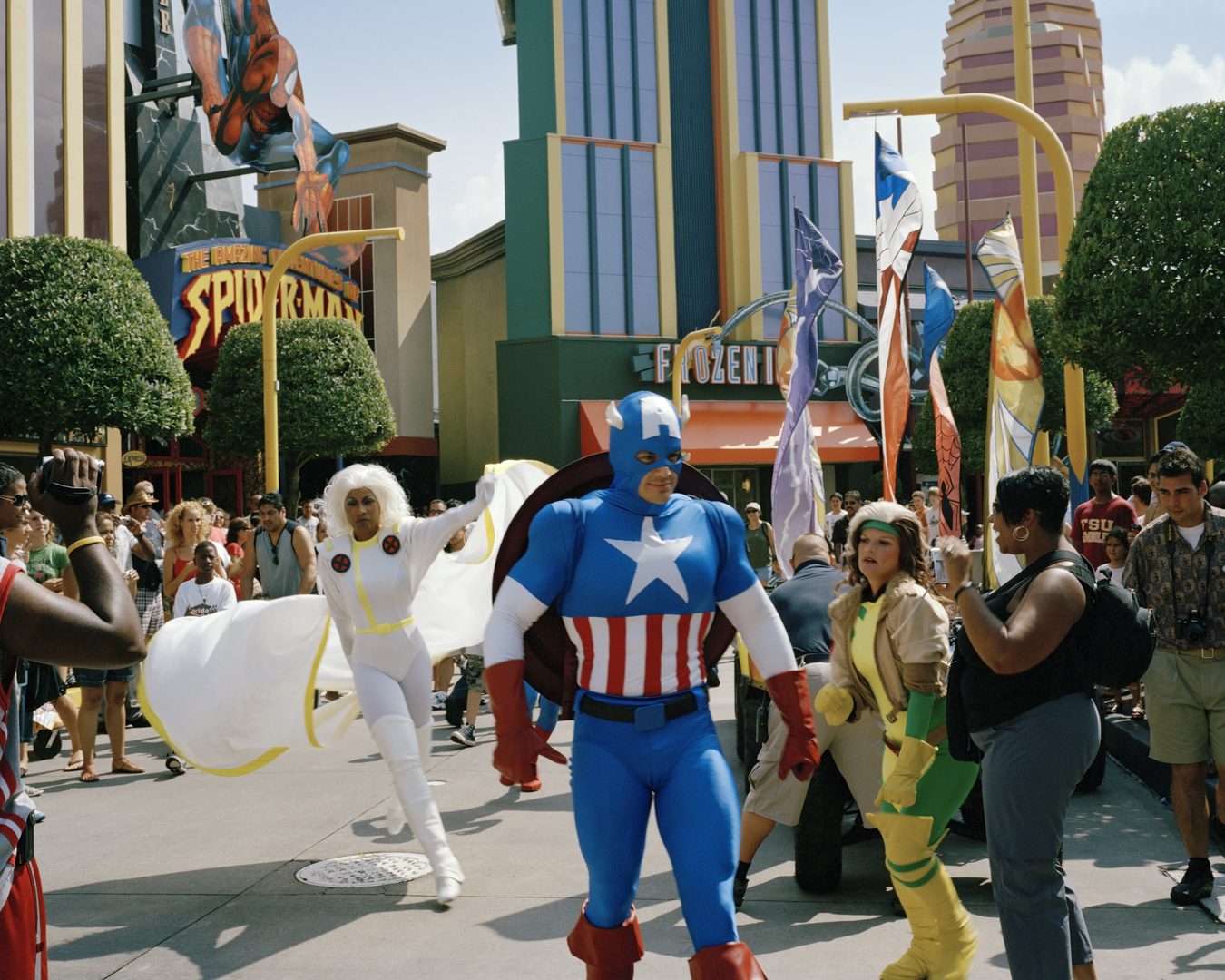
Tourist theme parks have become icons of American culture. America is a relatively young nation compared to other countries in the world. The United States does not have ancient castles or cathedrals; instead we have places like Disney World or Universal Studios. The invention of the automobile and the paving of highways made travel more accessible and convenient for people to escape from the cities. This mobility aided in the growth of tourism across America.
Through my travels, I have developed a fascination with the artificiality of these attractions. Theme parks allow for visitors to participate in simulated experiences; and people seem content in accepting this substitution of the fake for the real. Tourists are drawn to these synthetic attractions because they are seeking entertainment and adventure with all the conveniences of home. Also the souvenirs typically collected from these parks function as replicas of the experience; therefore, the memento serves as a representation of the event, taking on a life of its own.
The creation of these miniature universes has made it more difficult to imagine the real. The imitations of time and culture in these parks have allowed the fake to become the real. Baudrillard claims, “It is no longer a question of a false representation of reality…but of concealing the fact that the real is no longer real.” Fantasy replaces reality and the artificial is the real.